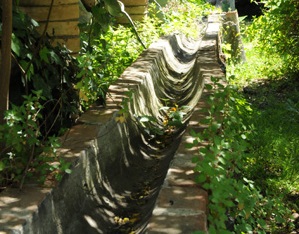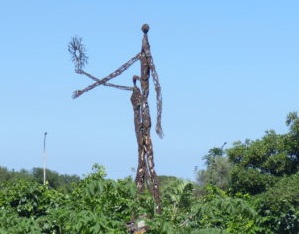The garden, located on the slopes of the Mount Etna volcano and growing on a layer of lava deposited over 600 years ago, amongst its citrus groves and flowering plants preserves traces of ancient civilisations with stone paths and irrigation canals of Arab origin.
The about three-hectare garden of Villa Trinità is a recent creation of its owner, agronomist and landscaper Salvatore Bonajuto. The complex that owes its name to the nearby church of SS. Trinità comprises a manor house dating back to 1609 and the surrounding agricultural land. After having been planted with vineyards, in the 1960s the Bonajuto family decided to allocate a large part of the land to the cultivation of citrus fruits, but the crisis that hit this sector in between the 1980s and 1990s, led them to reconvert the property into an agriturismo charming country retreat, setting up a botanical garden, a citrus grove (where the “saje” Arab system of irrigation is still used), and a vineyard. The garden is crossed by ancient stone pathways called “rasule” and is home to an important collection of Mediterranean plants, organic citrus groves, and 18 varieties of Sicilian figs (Ficus carica). As well as fruit trees, other garden highlights include camelias, a vast selection of succulents and iris, ferns, pistachios, sorb trees, Mediterranean medlars, cacti, palms, blossoming Jacaranda, the Chorisia speciosa, silk floss tree with its thorn-covered trunk, a centuries-old European nettle tree and the Schinus molle, known as the “false pepper tree”. The presence of a small downy oak wood, a spontaneous plant typical of del “bosco etneo”, the no-longer existent Etnean wood environment, adds a note of naturalistic value to the property: here on the lava the acanthus, the giant fennel, stonecrops and the grape hyacinth have reappeared.




